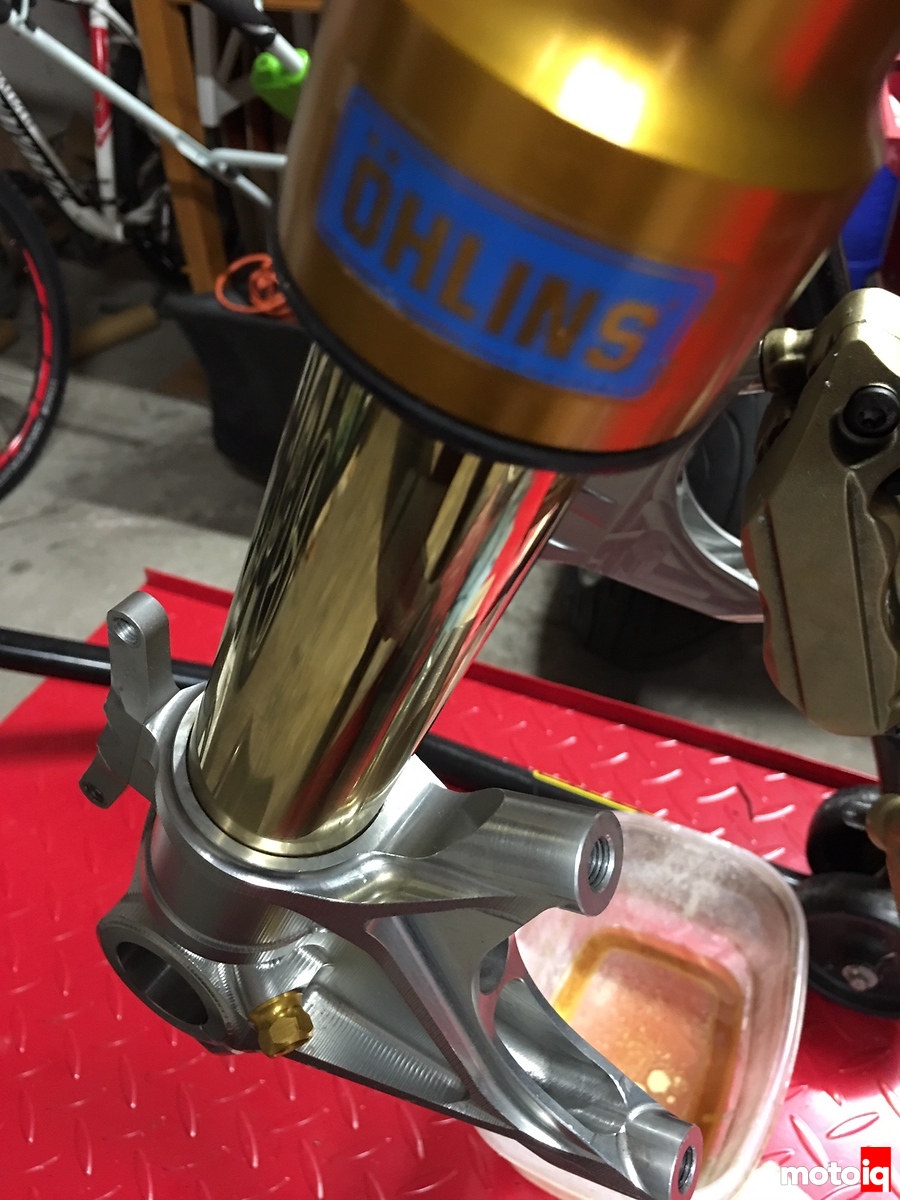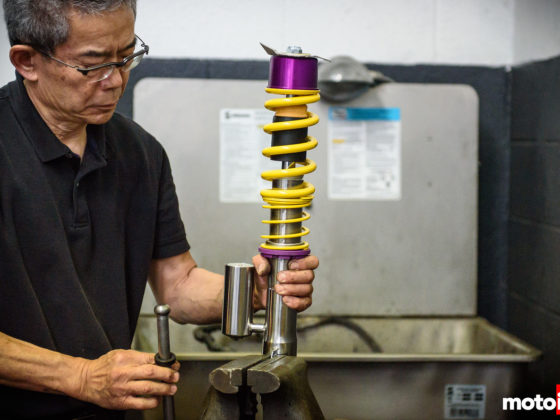I tried to fit some brake hoses I had lying around the garage but the angles of the caliper hose mount is very different. I tried several times to calculate lengths and angles of the necessary brake hoses and order custom ones. Then it dawned on me to order hoses for the S1000RR that the calipers are designed for and they’ll probably work. The hoses are from Core made in the US and are the simplest routing, having a ‘T’ split to the calipers.
The brake master cylinder was mounted and work began on mounting the reservoir. There’s no easy way of mounting the reservoir with the stock brackets with an aftermarket Brembo master cylinder. A different solution will be needed.


The last fitment was to remove the fork caps and bottom out the suspension to verify wheel clearance to the radiator and oil cooler. It’s awfully tight to the radiator, but remember this is with the fork dust seals sitting on the fork bottoms. The suspension should never see this position during racing. That being said, there is still technically room to the oil cooler, cylinder head as well as the radiator. The front racing tire will be a little bigger in circumference than the tire currently mounted, but given the space available, I don’t think this will be a problem under any racing condition.





6 comments
Be careful substituting in stainless steel bolts in the place of carbon steel bolts. Austenitic stainless steels like 18-8/304 are typically very low strength with the amount of work hardening that goes into making a bolt. Additionally, the different methods of making a bolt, and how much the threads are rolled drastically affect the final tensile strength of the bolt, to the point that they typically aren’t even rated for tensile strength or hardness.
Most low carbon bolts are going to have a tensile strength in the 115-145 ksi range, while most commercial CRES bolts will be in the ~70-85 ksi range.
Great comment Def. McMasterCarr sells multiple types of stainless fasteners. For clarification, I used the ‘High Strength Stainless Steel Socket Head Screws’ specifically because they have a higher tensile strength of 110 ksi vs the regular stainless’s 70 ksi.
I think either would work though; titanium bolts are readily available as replacements and have less tensile strength than either type of steel.
A good point to make Rob, it might be good to note this in the article because I was thinking the same thing as Def.
Updated. Thanks again for the comment Def!
Had the exact same thought regarding 300 series stainless fasteners. Nice find with the high strength options. That being said, there are many titanium fasteners that are 110+ ksi. The ones on mcmaster that quote 50 ksi are probably grade 2 titanium for corrosion resistance. Grade 5 is much stronger and that’s what is more typical for performance oriented fasteners (pro-bolt, allied titanium, etc.)
You’re right. Pro bolt lists grade 5 for their titanium fasteners with a ‘greater than 120ksi’ tensile strength. They also list shear modulus, ductility, Rockwell hardens etc. Really quite impressive that they have all of this information for the customer.
They also DLC coat the fasteners for corrosion resistance. Shame their too expensive typically for a cheap ass like myself.